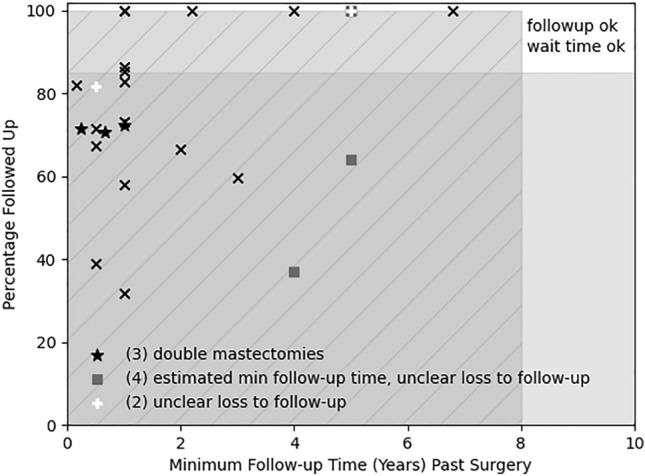Fig. 1.

Minimum follow-up time vs. percentage followed up in Bustos et al. (2021). Studies in Bustos et al. (2021) are plotted as “x” with their minimum follow-up time (if there was a range) and loss to follow-up, except for double mastectomies (asterisks; Nelson et al., 2009; Olson-Kennedy et al., 2018; Poudrier et al., 2019), unclear loss to follow-up (white “+”: Song et al., 2011, Zavlin et al., 2018), and estimated minimum follow-up time and unclear loss to follow-up (“◾”: Judge et al., 2014, van de Grift et al. 2018, Vujovic et al., 2009, Wiepjes et al., 2018); see Appendix for details (Alleva, 2023 also discusses follow-up times). There are three studies with unknown follow-up which are placed at 100% and overlap, as they all have reported or estimated minimum follow-up time of five years or less. Loss to follow-up of more than 15% is grayed out, minimum follow-up time of less than the median regret from Dhejne et al. (2014) of ~ 8 years is both grayed out and has lines. Only studies in the white area have both sufficient follow-up time given median surgical regret times from Table 1 (at least 8 years) and sufficient follow-up (at least 85%); there are none
